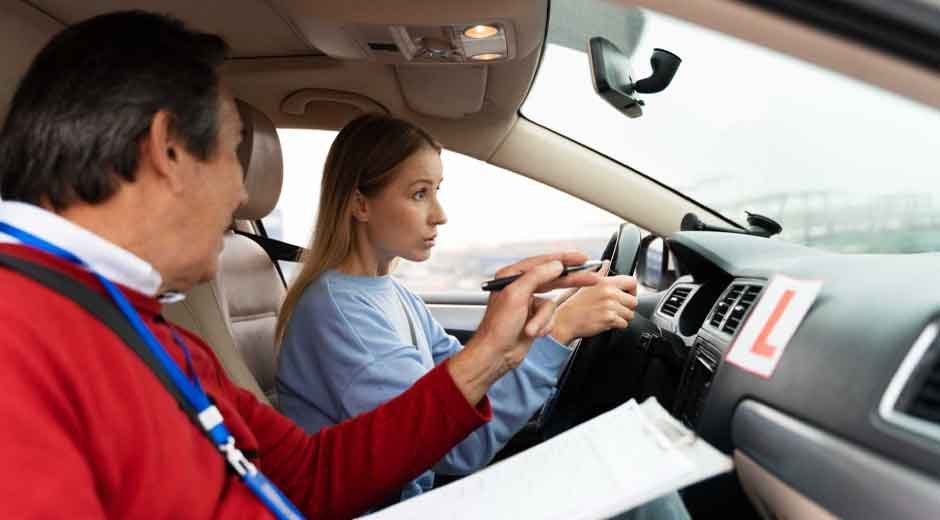Learning to drive is an exciting milestone, but it can also be intimidating for many beginners. New drivers often face challenges as they build confidence behind the wheel. While making mistakes is part of the learning process, some errors are more common and can even be dangerous if not addressed early. To help you become a safer, more confident driver, here’s a rundown of the top 10 common mistakes beginner drivers make — and practical tips on how to avoid them.
Table of Contents
1. Failing to Check Blind Spots
One of the most frequent beginner mistakes is neglecting to check blind spots before changing lanes or merging. Relying only on mirrors can leave you unaware of vehicles or cyclists nearby.
How to avoid: Always turn your head to glance over your shoulder and physically check your blind spots. Practice this until it becomes second nature, especially in busy traffic.
2. Following Too Closely
Tailgating is dangerous at any skill level, but beginner drivers often follow the car in front too closely due to nervousness or misjudgment of stopping distance.
How to avoid: Maintain at least a 3-second gap between you and the car ahead. Increase this distance in bad weather or heavy traffic to give yourself more reaction time.
3. Ignoring Speed Limits
New drivers sometimes either drive too slowly out of caution or too fast due to adrenaline or peer pressure. Both can cause unsafe conditions.
How to avoid: Always observe posted speed limits and adjust your speed according to road and weather conditions. Remember, speed limits are there to keep everyone safe.
4. Poor Lane Discipline
Drifting between lanes, weaving through traffic, or failing to signal are common problems among new drivers still mastering spatial awareness and car control.
How to avoid: Stay centered in your lane and use your turn signals well before making any lane changes. Practicing smooth lane changes in a quiet area can help build your confidence.
5. Overcorrecting Steering
Beginners often oversteer when nervous or surprised, causing the vehicle to swerve abruptly, which is dangerous.
How to avoid: Keep your hands steady and make gentle, controlled steering movements. If you feel panicked, slow down and breathe deeply to regain control.
6. Not Using Mirrors Properly
Many new drivers forget to check their rearview and side mirrors regularly, missing important cues about traffic around them.
How to avoid: Get into the habit of scanning all mirrors every few seconds, especially before braking, turning, or changing lanes. This keeps you aware of your surroundings.
7. Misjudging Gaps in Traffic
Knowing when to safely enter traffic from a stop, such as at a junction or when merging, is tricky for beginners, leading to hesitation or unsafe moves.
How to avoid: Practice estimating safe gaps in traffic with a driving instructor or experienced driver. When in doubt, wait for a larger gap rather than rushing in.
8. Failing to Yield Right of Way
New drivers sometimes misunderstand right-of-way rules, which can lead to near misses or accidents.
How to avoid: Study and review local traffic laws, especially at intersections and pedestrian crossings. When unsure, always err on the side of caution and yield to others.
9. Distracted Driving
Whether it’s fiddling with the radio, using a phone, or talking too much with passengers, distractions are a huge risk, especially for beginners still learning to focus on the road.
How to avoid: Minimize distractions by setting your music or GPS before starting, keeping your phone out of reach, and limiting conversation while driving.
10. Not Anticipating Hazards
New drivers often focus too narrowly on the vehicle directly ahead and miss signs of potential hazards like pedestrians, cyclists, or sudden stops.
How to avoid: Build strong defensive driving skills by consistently scanning the road ahead and to your sides. Always anticipate potential hazards and stay prepared to respond calmly. Consider enrolling in a defensive driving course in Utah to sharpen these crucial skills and boost your confidence behind the wheel.
Bonus Tips for New Drivers
- Practice Regularly: The more time you spend behind the wheel, the more comfortable you will become.
- Stay Calm: Anxiety can cause mistakes. Use deep breathing and positive self-talk to stay focused.
- Take Professional Lessons: Instructors can give targeted feedback and help correct bad habits early.
- Plan Your Routes: Start driving on less busy roads before tackling highways or complex intersections.
Final Thoughts
Mistakes are inevitable for beginner drivers, but being aware of the most common ones and learning how to avoid them can make all the difference. Driving safely requires practice, patience, and mindfulness. By avoiding these common errors, you’re not only protecting yourself but also everyone else on the road. So take it slow, stay alert, and keep improving your skills every time you drive!
Safe driving starts with you — make every mile a learning opportunity.
